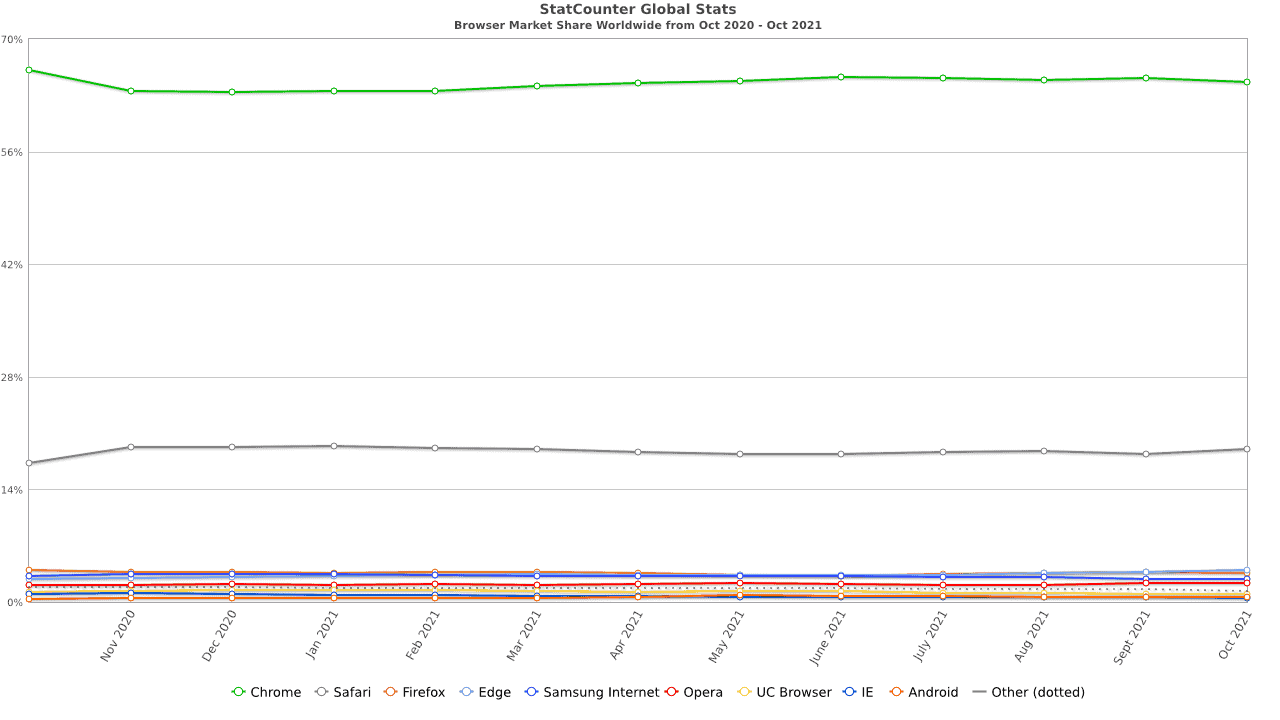You may have heard that Google plans to phase out third-party cookies by 2022, which has been the gold standard for advertising tracking and retargeting. More importantly, they also announced they would not be creating “alternate identifiers to track individuals as they browse across the web, nor will we use them in our products.”
Why this sudden change? Google wrote, “We don’t believe these solutions will meet rising consumer expectations for privacy, nor will they stand up to rapidly evolving regulatory restrictions, and therefore aren’t a sustainable long term investment. Instead, our web products will be powered by privacy-preserving APIs which prevent individual tracking while still delivering results for advertisers and publishers.”
While this announcement has been met with great panic and anxiety by advertisers and marketers, it’s not actually the end of the world.
This is your opportunity as an advertiser to build more 1:1 relationships with your customers and take advantage of new networks with first-party cookies, like retail media.
Here’s what that looks like:
What’s happening with cookies?
Let’s break down what’s happening with third-party cookies, and why Google’s announcement is so important for advertisers.
Other browsers, like Safari and Firefox, blocked cookies back in 2013. But Google Chrome accounts for more than half of all Internet traffic — meaning you’re losing out on tracking pretty much everyone.

Traditionally, third-party cookies follow website visitors along to wherever they go on the internet, showing you the websites they frequently visit, other purchases they make, or where they get their news and information. All of this adds up to building profiles you can use to retarget prospects and customers as they visit other sites with advertisements.
Google extended their deadlines to phase out third-party cookies several times, but the point is: the end of third-party cookies is coming in 2022, and you need to have an alternate plan in place for advertising without cookies. With the rise of new privacy laws, it was only a matter of time.
Focus on 1:1 relationships
All of this opens the door to focusing less on a “spray-and-pray” approach and more on personalized, 1:1 relationships with your clients’ ideal customers — the ones who are going to purchase again and again.
You need to start thinking more deeply about your audience and their preferences. Advertisers need to go where their audiences is, and increasingly, that looks more fragmented and digital driven:
- Digital media services and direct-to-consumer platforms like Netflix, Amazon Prime, Hulu, and Disney+ are now the top choice of the connected consumer for television
- Audiences expect hyper-personalization for media experiences, which can only be achieved with data and a 360-degree-view of the customer
- Entertainment landscape continues to go digital, with a rise in virtual experiences and augmented reality at movie theaters, theme parks, concerts, and sporting events
As advertisers, how can we be more creative in the way we approach and engage our audience? That comes from understanding exactly how target audiences approach their purchase path, what channels influence them the most, and what kind of advertising best suits their needs — rather than the needs of the advertiser.
The more you can visualize your prospects as people, rather than numbers and cookies to track, the easier it will be to build ads that works. It may end up looking a little Mad Men, old-school at first — but that’s ok. Remember, eyeballs are only as good as the conversion metrics that come with them.
You’ll need to be more strategic about where you put your dollars, but it comes down to this: the winners in a post-cookie marketing world will be able to create relationships with the customer.
Manage your data in one place
Third-party cookies made it easier to track your customers’ behavior on your sites and others and personalize your advertisements.
With multiple goals, campaigns, channels, and technologies, it can be difficult to get the bigger picture and answer questions like:
- Is my forecast accurate?
- What’s our revenue at risk?
- How do we accelerate sales cycles?
- How can we maximize revenue per rep?
With the deprecation of third-party data, it’s time to focus on what you can control: your first-party data. Google isn’t going to block any of that data collection, and you can tailor and customize exactly what data you collect on your own website.
You already have ad sales, content performance, and subscriber information. What you need to do is streamline all of the different sources of your own data to get one single picture of your advertising performance, your target audience, and your advertising experience. Essentially, a customer data platform (CDP) that manages all of this in one place — making it seamless for you to target, track, and deploy ads.
That’s exactly what Salesforce Media Cloud can help with. Built on an industry-specific data model that extends your 360-degree-view of the customer, Salesforce Media Cloud gives you access to deep analytics and insights for budgeting, projections, actualization, and campaign pacing, with integrations that push data across multiple downstream systems so your team can collaborate and execute seamlessly.
A cookie-free data strategy with Silverline
Finally, don’t panic.
The partnership we have established with Salesforce Media Cloud and Salesforce’s continued investment and innovation positions Silverline to support growing organizations and springboard their digital transformation with Salesforce Media Cloud. We’re here to help agencies and companies alike revolutionize the way they go about media buying — putting you back in the driver’s seat.





